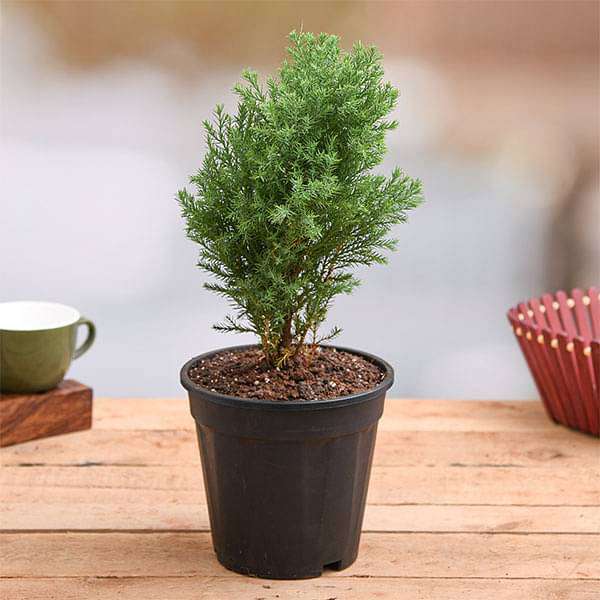
Juniper, Juniperous Erecta - Plant
(MRP Inclusive of all taxes)
- Shipping ₹79 for entire order
- Dispatch in 7 days
- Country of origin: India

(MRP Inclusive of all taxes)
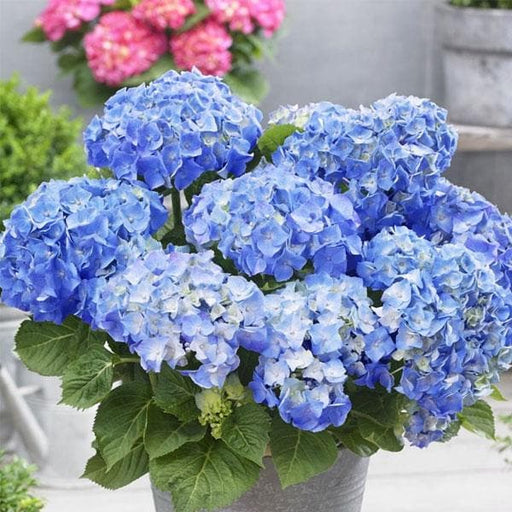 Save 18%
Save 18%
Hydrangea macrophylla (Any Color) - Plant Hydrangea macrophylla, commonly known as Bigleaf Hydrangea, is a stunning flowering plant that c...
View full details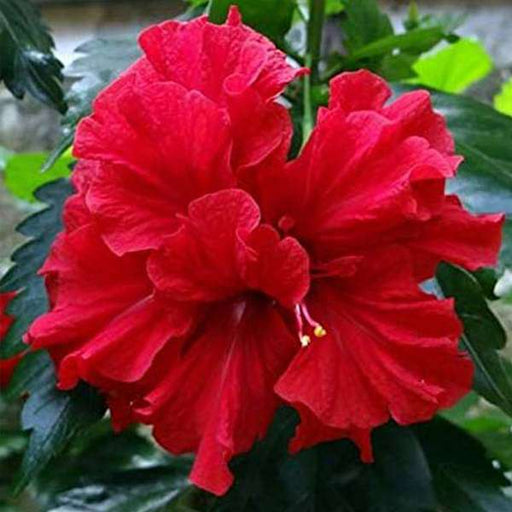 Save 25%
Save 25%
Hibiscus, Gudhal Flower (Red Double) - Plant The Hibiscus, also known as Gudhal Flower, is a stunning ornamental plant that boasts vibrant...
View full details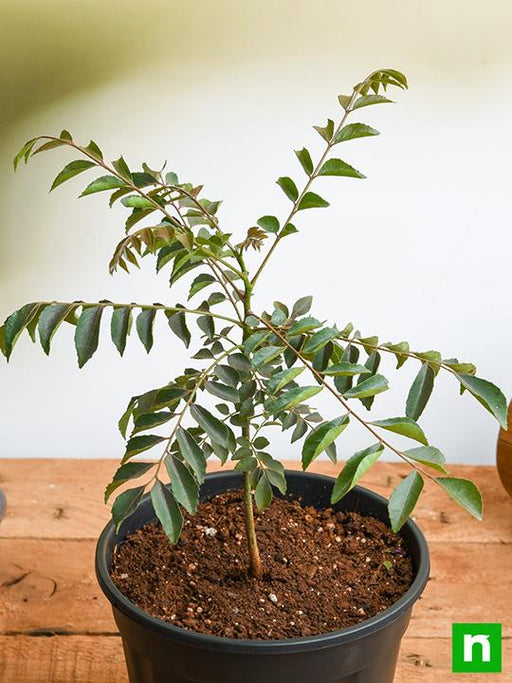
 Save 18%
Save 18%
Curry Leaves, Kadi Patta, Murraya koenigii, Meetha Neem - Plant Curry Leaves, scientifically known as Murraya koenigii, are aromatic leave...
View full details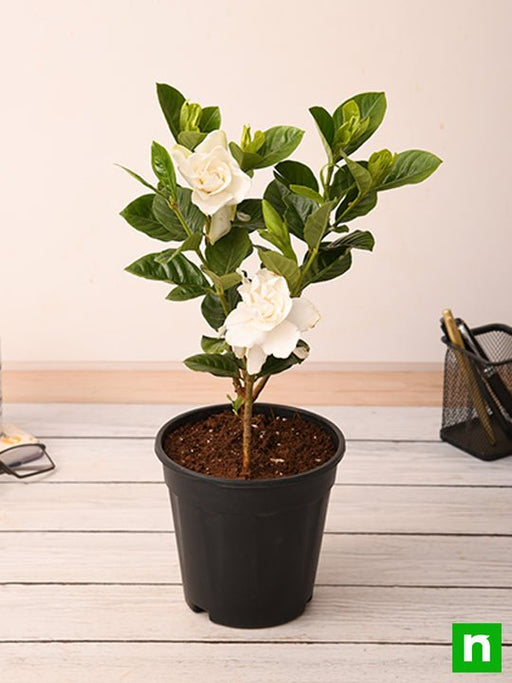
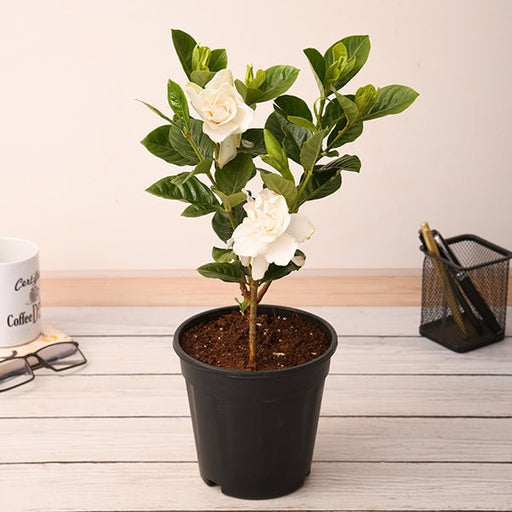 Save 25%
Save 25%
Gardenia, Ananta - Plant The Gardenia, Ananta, is a stunning evergreen shrub known for its fragrant white blooms and glossy dark green lea...
View full details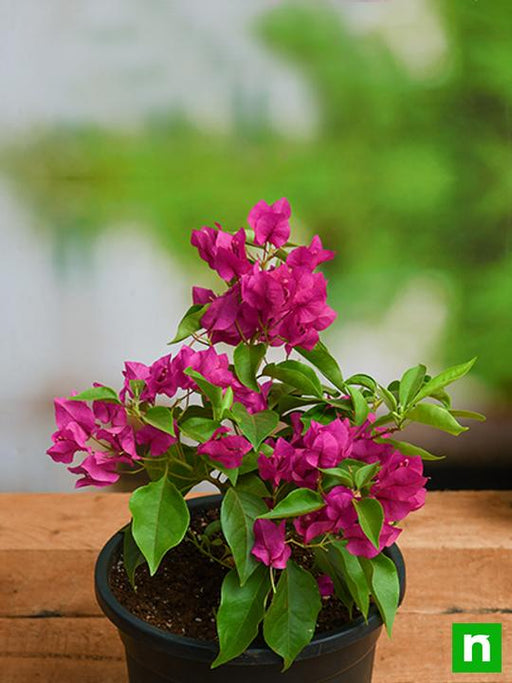
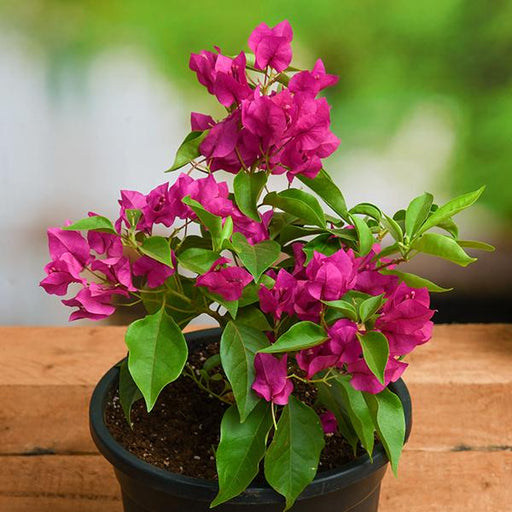 Save 13%
Save 13%
Bougainvillea (Pink) - Plant The Bougainvillea (Pink) is a stunning tropical plant known for its vibrant, paper-like bracts that bloom in ...
View full details
 Save 25%
Save 25%
Hibiscus, Gudhal Flower (Red) - Plant The Hibiscus, commonly known as Gudhal Flower, is a stunning tropical plant renowned for its vibrant red blo...
View full details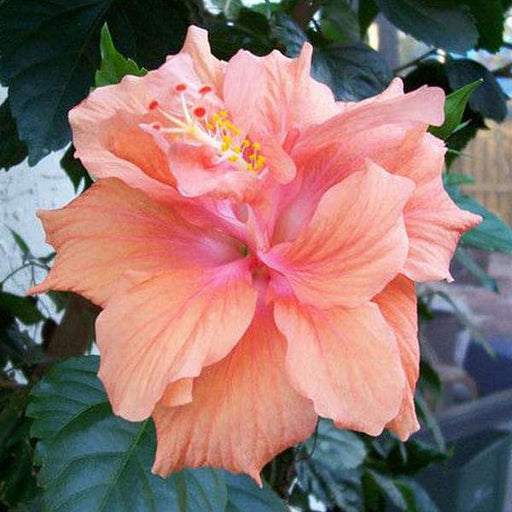 Save 25%
Save 25%
Hibiscus, Gudhal Flower (Peach Double) - Plant The Hibiscus, also known as Gudhal Flower, is a stunning ornamental plant that showcases be...
View full details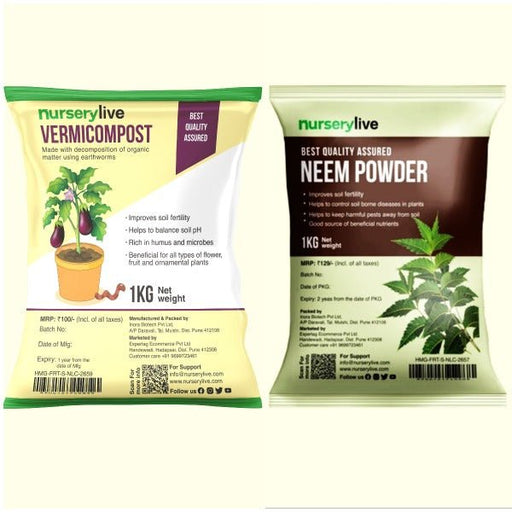 Save 15%
Save 15%
Pack of Vermicompost and Neem Cake for House Plants Transform your indoor garden with our premium Pack of Vermicompost and Neem Cake, spec...
View full details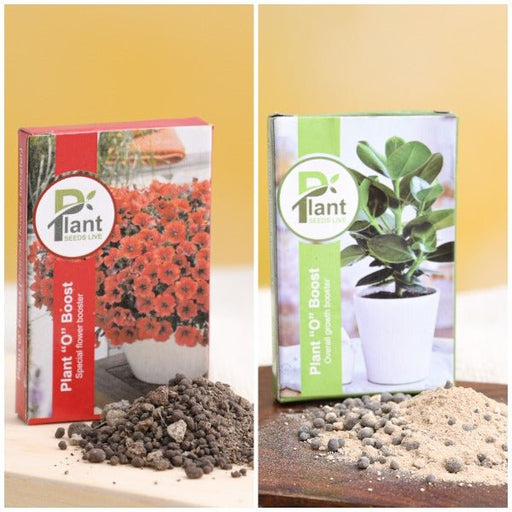
Pack of Plant Growth and Flower Boosters Unlock the full potential of your garden with our Pack of Plant Growth and Flower Boosters! This ...
View full details Save 38%
Save 38%
Combo of Jeevamrut and Neem Raksha for Easy Growth and Protection of Houseplants Transform your indoor garden with our exclusive combo of ...
View full details Save 22%
Save 22%
Plant Nutrients Kit (Pack of 16) for a Healthy Garden Transform your garden into a lush paradise with our Plant Nutrients Kit, featuring 1...
View full details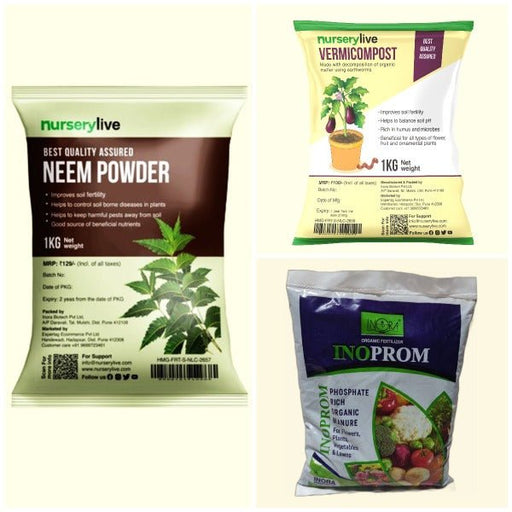 Save 16%
Save 16%
Combo of Top Plant Fertilizers Elevate your gardening game with our exclusive Combo of Top Plant Fertilizers, featuring two bags of premiu...
View full details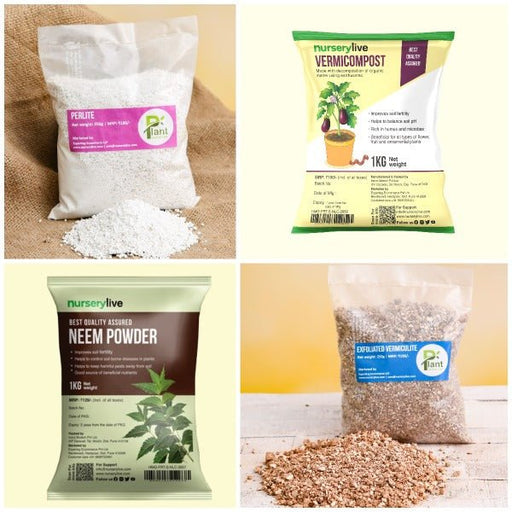 Save 24%
Save 24%
Pack of 4 Additives to Make Soil Healthy and Nutrient Rich Transform your garden into a thriving ecosystem with our Pack of 4 Additives de...
View full details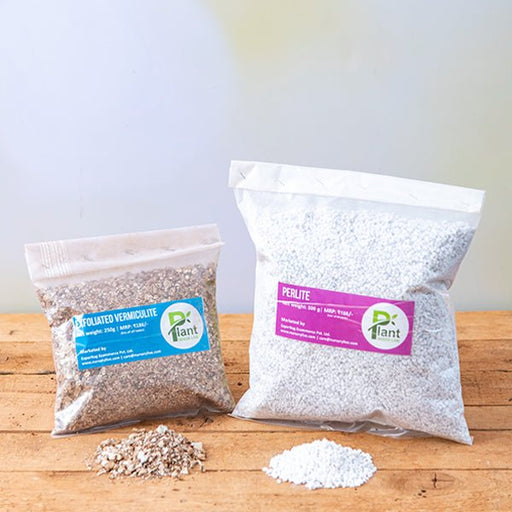 Save 30%
Save 30%
Transform your gardening experience with our premium Combo of Perlite and Vermiculite. This unique blend is designed to enhance soil aeration and ...
View full details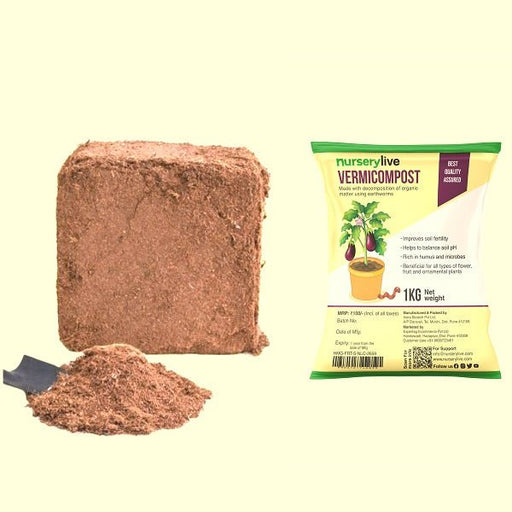 Save 27%
Save 27%
Combo of 2 Vermicompost and Cocopeat - Enrich Your Soil Naturally! Transform your garden into a thriving ecosystem with our Combo of 2 Ver...
View full details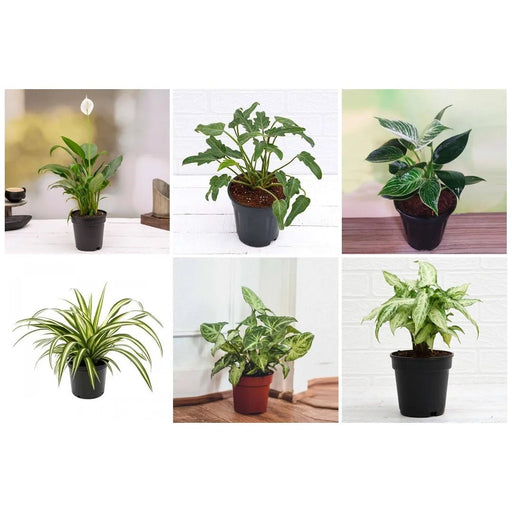
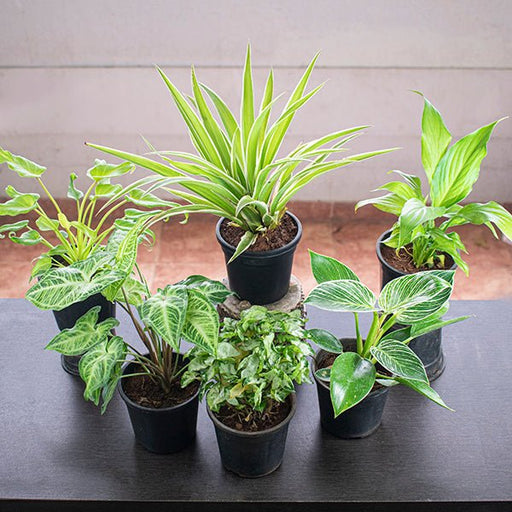 Save 35%
Save 35%
Best 6 Plants for Perfect Indoor Garden Transform your living space into a lush oasis with our curated collection of the Best 6 Plants for a...
View full details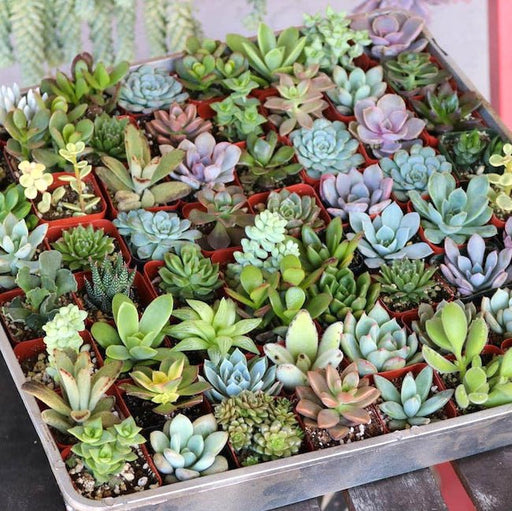
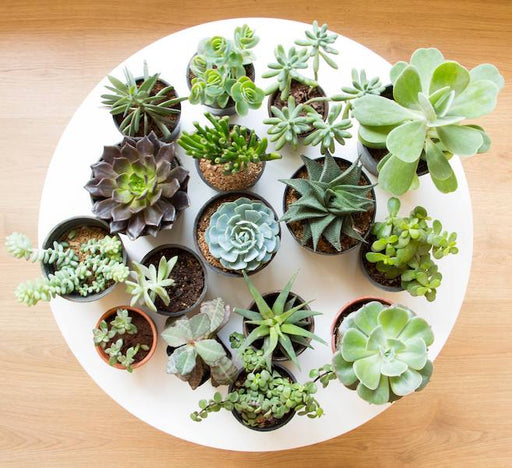 Save up to 50%
Save up to 50%
Mini Succulent Garden Pack Transform your space with our Mini Succulent Garden Pack, featuring a delightful collection of 4 any variety beautiful s...
View full details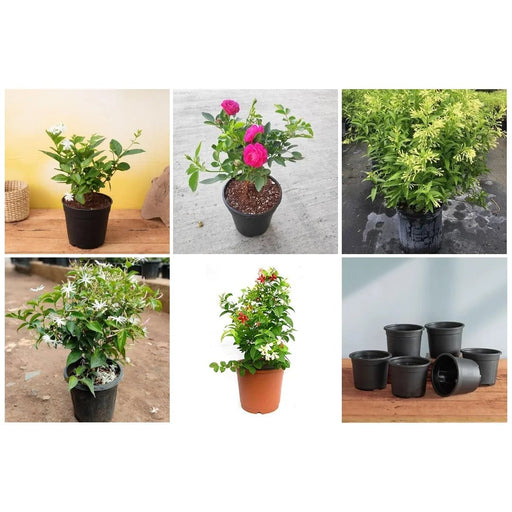
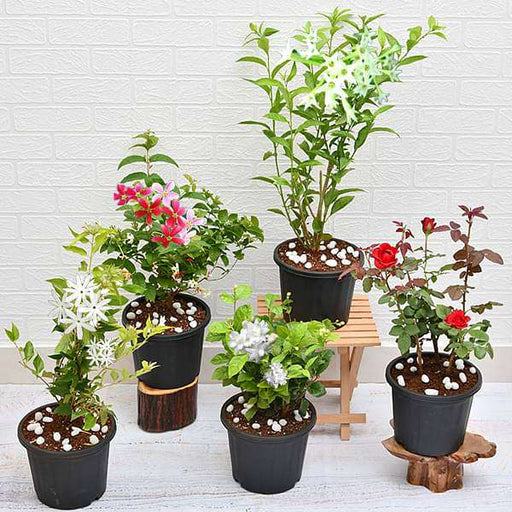 Save 30%
Save 30%
5 Best Fragrant Plants Transform your garden or indoor space into a fragrant paradise with our curated selection of the 5 Best Fragrant Plants. Th...
View full details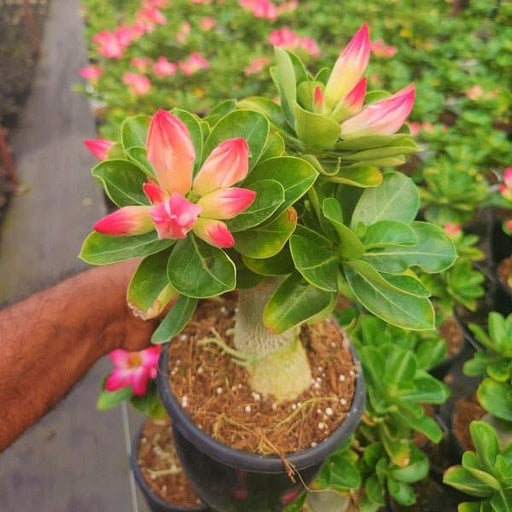
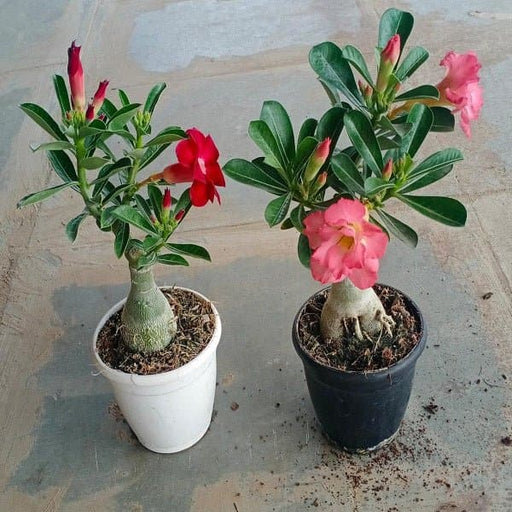 Save 24%
Save 24%
Set of 2 Bonsai Looking Grafted Adeniums Transform your indoor or outdoor space with our exquisite Set of 2 Bonsai Looking Grafted Adenium...
View full details Save 45%
Save 45%
Top 4 Die Hard Succulents Pack Transform your indoor or outdoor space with our Top 4 Die Hard Succulents Pack, featuring a curated selecti...
View full details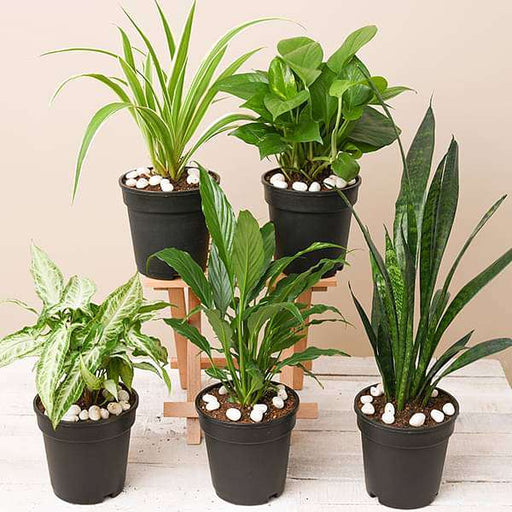
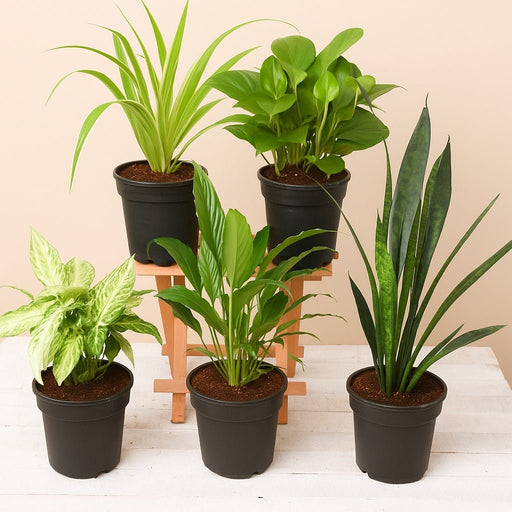 Save 30%
Save 30%
5 Best Indoor Plants Pack Transform your living space into a lush oasis with our '5 Best Indoor Plants Pack.' This carefully curated collection fe...
View full details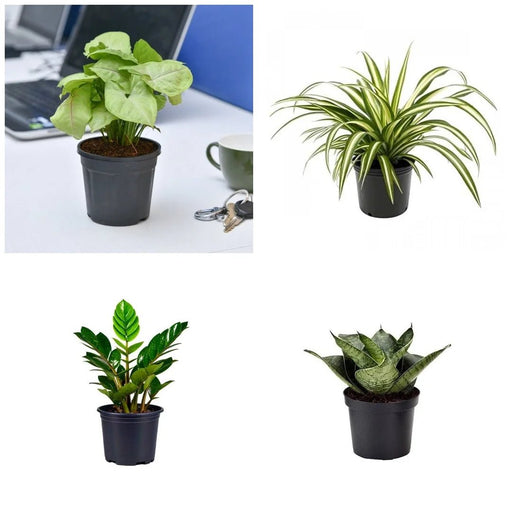
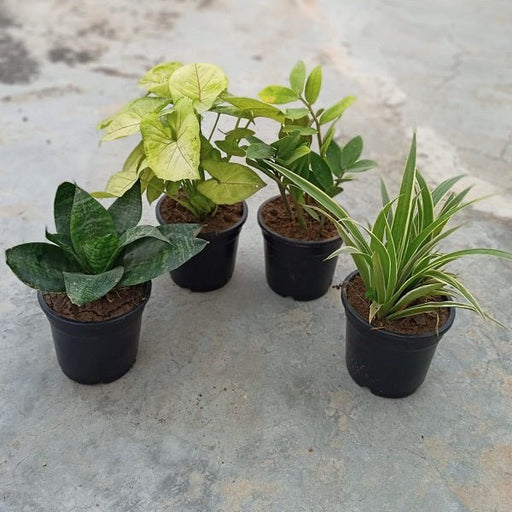 Save 25%
Save 25%
Set of 4 Evergreen Air Purifier Plant Pack Transform your indoor space into a lush, green oasis with our Set of 4 Evergreen Air Purifier Pla...
View full details| SrNo | Item Name | Qty |
|---|---|---|
| 1 | Juniper, Juniperous Erecta Plant in 5 inch (13 cm) Pot | 1 |
The Juniper, scientifically known as Juniperous Erecta, is a striking evergreen shrub that adds a touch of elegance to any landscape. With its upright growth habit and dense foliage, this hardy plant is perfect for creating privacy screens or as a standalone feature in gardens. Its needle-like leaves are a vibrant green, turning to a beautiful blue-green hue in winter, making it a year-round visual delight.
What makes Juniperous Erecta special is its adaptability to various soil types and climates, thriving in both urban and rural settings. This resilient plant is drought-tolerant once established, making it an eco-friendly choice for sustainable gardening. Its ability to withstand harsh conditions while providing habitat for local wildlife further enhances its appeal.
One of the standout features of Juniperous Erecta is its aromatic foliage, which releases a pleasant scent when brushed against. Additionally, it produces small, blue berries that attract birds and other wildlife, contributing to biodiversity in your garden.
Juniperous Erecta plays a vital role in soil stabilization and erosion control, making it an excellent choice for landscaping in areas prone to runoff. Its ability to thrive in poor soil conditions helps improve soil health over time, promoting a balanced ecosystem.
If you think caring for a Juniper is as easy as pie, think again! These spiky little wonders require a bit of TLC. Water them just right, and they’ll reward you with lush greenery. Overdo it, and you might as well be hosting a funeral for your poor plant. Remember, they prefer well-drained soil and a sunny spot. So, channel your inner plant whisperer and give your Juniper the love it deserves!
Did you know there are over 50 species of Juniper? That’s right! From the lowly ground cover to the majestic Juniperous Erecta, there’s a Juniper for every garden personality. Some are bushy, some are tall, and some are just plain quirky. It’s like a family reunion where everyone shows up in their most eccentric outfits. Choose wisely, and your garden will be the talk of the town!
Want to add a touch of elegance to your garden? Junipers are the perfect landscaping sidekicks! They can be used as hedges, ground covers, or even as statement pieces. With their evergreen charm, they’ll keep your garden looking fabulous all year round. Just imagine your neighbors peeking over the fence, green with envy. So, get creative and let your Junipers strut their stuff!
Junipers are picky about their soil, but who isn’t? They thrive in well-drained, sandy soils that allow their roots to breathe. Think of it as giving them a spa day! Heavy, clayey soils? No thanks! They’ll sulk and turn brown faster than you can say “plant therapy.” So, make sure to pamper your Juniper with the right soil mix, and watch it flourish like the diva it is.
Pruning your Juniper is like giving it a stylish haircut. A little snip here and there can keep it looking sharp and well-groomed. But beware! Overzealous pruning can lead to a bald Juniper, and nobody wants that. Aim for a light trim to maintain its shape and health. Think of it as a seasonal refresh, ensuring your Juniper stays the belle of the botanical ball.
Just when you thought your Juniper was living the good life, pests come knocking! Aphids, spider mites, and scale insects can turn your plant paradise into a pest party. But fear not! A little neem oil or insecticidal soap can send those uninvited guests packing. Keep an eye out, and your Juniper will remain the fortress of solitude it was meant to be.
Want to multiply your Junipers like rabbits? Propagation is the way to go! You can take cuttings and root them in water or soil, and voilà! You’ll have a mini Juniper army in no time. It’s like cloning, but way less sci-fi and more garden chic. Just remember to give them the same love and care as their parent, and they’ll thrive like the little green warriors they are.
Junipers aren’t just pretty faces; they have a plethora of uses! From ornamental landscaping to providing cover for wildlife, these plants are the Swiss Army knives of the garden world. Some varieties even produce berries that can be used in cooking or crafting gin. So, whether you’re looking to beautify your space or whip up a cocktail, Junipers have got your back!
If you’re impatient for your garden to flourish, Junipers are your friends! They boast a moderate growth rate, meaning you won’t be waiting eons for them to reach their full glory. With the right conditions, they can grow several inches a year. So, sit back, relax, and watch your Juniper transform from a wee sprout to a majestic tree, all while you sip your favorite beverage.
Sunlight is the secret sauce for a happy Juniper! These plants thrive in full sun, soaking up those rays like a beachgoer on a sunny day. If you try to keep them in the shade, they’ll sulk and lose their vibrant color. So, give your Juniper the sun it craves, and it will reward you with lush foliage and a garden that shines brighter than your neighbor’s.
Fertilizing your Juniper is like giving it a gourmet meal. A balanced, slow-release fertilizer in spring will keep it nourished and happy. But don’t go overboard! Too much fertilizer can lead to a growth spurt that’s more awkward than a teenager at prom. Stick to a schedule, and your Juniper will thrive, looking fabulous and feeling fabulous too!
Juniper, Juniperous Erecta is a tall, evergreen shrub that stands proud like a green sentinel. With its needle-like leaves and upright growth, it’s perfect for adding structure to your garden. Plus, it’s low-maintenance, making it the lazy gardener’s best friend. Who knew being green could be so easy
Caring for Juniper, Juniperous Erecta is as easy as pie—if pie were a drought-tolerant, sun-loving plant! Just plant it in well-drained soil, give it plenty of sunlight, and water sparingly. Pruning is optional, but a little snip here and there keeps it looking sharp. Who knew gardening could be this simple
Juniper, Juniperous Erecta thrives in full sun and well-drained soil, like a sunbather on a beach day. It loves dry conditions, so don’t drown it with water. This plant is a tough cookie, tolerating poor soil and drought. Just remember, it’s not a fan of soggy feet—keep those away!
Absolutely! Juniper, Juniperous Erecta can rock the container life like a pro. Just ensure the pot has good drainage and is large enough for its roots to stretch. It’s a great way to add vertical interest to patios or balconies. Just don’t forget to give it a sunbathing spot!
Yes, indeed! Juniper, Juniperous Erecta is like the bouncer of the plant world—deer don’t want to mess with it. Its aromatic foliage and prickly texture make it unappetizing to those four-legged munchers. So, plant it with confidence, and let the deer find a salad bar elsewhere!
Juniper, Juniperous Erecta is no speed demon, but it grows at a moderate pace of about 6 to 12 inches per year. Patience is key, my friend! In a few years, you’ll have a tall, majestic plant that’s the envy of your neighbors. Good things come to those who wait!
Absolutely! Juniper, Juniperous Erecta is a landscaping superstar, perfect for hedges, borders, or as a focal point. Its upright form adds height and structure, while its evergreen nature keeps your garden looking fabulous year-round. It’s like the reliable friend who always shows up to the party—never disappoints!
Juniper, Juniperous Erecta is pretty tough, but it can occasionally attract pests like spider mites or bagworms. Fret not! A little neem oil or insecticidal soap can send them packing. As for diseases, root rot can be a problem if overwatered. So, keep that watering can in check, and you’re golden!
Yes, you can prune Juniper, Juniperous Erecta, but it’s not a diva about it. Light pruning in early spring helps maintain its shape and encourages bushiness. Just avoid heavy pruning, as it can lead to unsightly bald spots. Think of it as a trim, not a buzz cut—keep it classy!
Juniper, Juniperous Erecta is quite the globetrotter, thriving in various climates, from USDA zones 3 to 9. It loves the sun and can handle cold winters like a champ. However, if you live in a tropical paradise, it might feel a bit out of place. It prefers a more temperate lifestyle!
Propagating Juniper, Juniperous Erecta is like playing plant matchmaker! You can take softwood cuttings in late spring or early summer. Dip them in rooting hormone, plant them in well-draining soil, and keep them moist. With a little patience, you’ll have new junipers ready to take on the world!